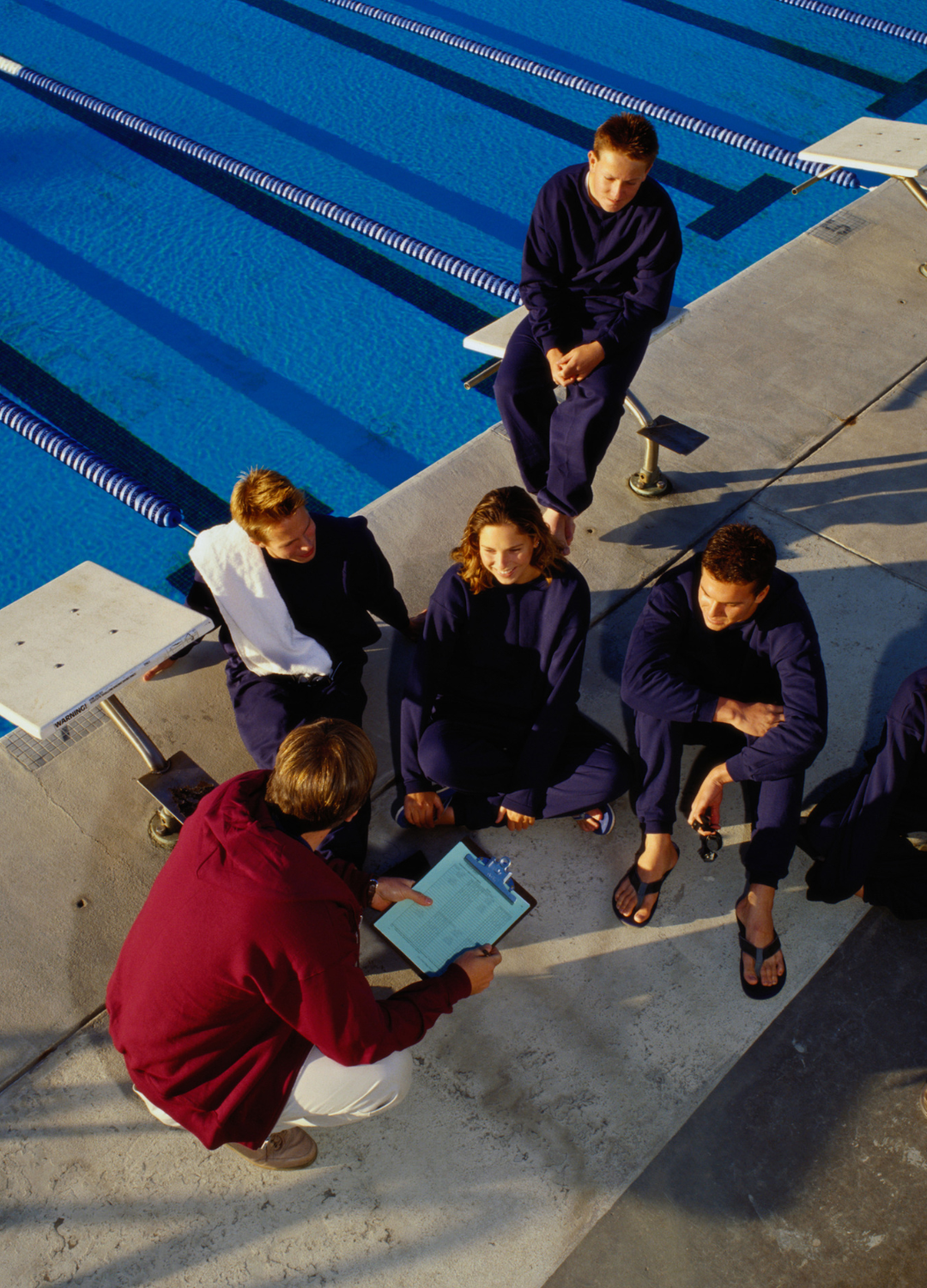Athlete Load Monitoring
Athlete load monitoring is the process of measuring, tracking, and analyzing the amount and intensity of physical activity undertaken by an athlete. It has become an essential tool for coaches in managing the training and recovery of athletes. This involves collecting data on various factors related to an athlete’s training and performance to gain insights into their workload and overall well-being.
The goal is to minimize the risk of injury, gain insight into an athlete’s workload, optimize performance, prevent burnout, and ensure athletes train within their physical limits for optimal performance and well-being. Athlete load can be defined in different ways, but it largely refers to the amount and intensity of physical activity undertaken by an athlete.
Factors include training volume, such as distance covered, time spent training, as well as training intensity, such as heart rate, power output, and the type of activity performed, such as running or weightlifting. Monitoring athlete load involves tracking these variables over time to create a comprehensive picture of an athlete’s training and performance.

The Importance of Athlete Load Monitoring
Monitoring athlete load is crucial for several reasons. Firstly, it helps to prevent injuries. Coaches and trainers can identify when an athlete is at risk of injury due to overtraining or excessive physical activity. This allows them to adjust the athlete’s training regimen to reduce the risk of injury.
This can also be done retroactively. For example, if an athlete strains their hamstring during a game or competition, the coaches can look back at the amount of time spent sprinting and performing other tasks that may be stressing the hamstrings. This way, after rehabilitation the coaches can use that information as a threshold to limit that athlete’s training load to prevent future injuries.
Secondly, athlete load monitoring helps to optimize performance. By tracking an athlete’s training and recovery, coaches and trainers can identify patterns and trends that can help to optimize their training regimen. For example, they may identify that an athlete performs best when they train at a certain time of day, or when they perform a certain type of exercise.
Optimizing Performance
Load monitoring to optimize performance can also be used in the case of someone that normally trains with high volume but has to taper leading into a competition. The coach can use this information to gradually reduce the load on the athlete to allow them to continue training while reducing the stress put on the body, ensuring that the athlete can perform at their best at competition time.
Finally, athlete load monitoring can help to prevent burnout. Athletes who train too hard or too frequently can become burnt out, which can lead to a decrease in motivation and performance. By monitoring athlete load, coaches and trainers can identify when an athlete is at risk of burnout and adjust their training regimen accordingly. Burnout can be comprehensive in the case that an athlete has simply undergone too high of a training load for too long, but it can also be localized.
Coaches can cycle through different areas of the body to keep training load high, but rotating where the higher load is. For example, an athlete can go through a heavy squat cycle to increase their overall strength while taxing the lower body. They can then be put on a cycle that focuses on lower body pull or even overhead work, depending on the sport. This can allow the athlete to move the load elsewhere, reducing the amount of time one area of the body spends in a high training load prescription.
Methods of Athlete Load Monitoring
There are several methods of athlete load monitoring, including subjective and objective measures. Subjective measures rely on an athlete’s self-reported feelings of fatigue, soreness, and perceived exertion, while objective measures rely on data collected through wearable technology or other tracking devices.
Subjective Measures
Subjective measures of athlete load include questionnaires and surveys that ask athletes to rate their perceived exertion, fatigue, and soreness. These measures are easy to administer and can provide useful insights into an athlete’s physical state. However, they are also subject to bias and may not be accurate in all cases.
One commonly used subjective measure is the Rating of Perceived Exertion (RPE) scale. This scale asks athletes to rate their perceived exertion on a scale of 1 to 10, with 1 being very light and 10 being very hard. There is also the

Recovery-Stress Questionnaire for Athletes (RESTQ-Sport), which asks athletes to rate their perceived stress and recovery on a scale of 1 to 7.
Another simple way to measure load subjectively is a wellness questionnaire that the athlete answers daily. These questionnaires typically ask questions that have the athlete rate their overall mood, sleep quality, sleep duration, energy levels, and muscle soreness. Collecting this data over time can allow a coach to watch for trends to compare training loads with the subjective variables in the questionnaire.

Objective Measures
Objective measures of athlete load include data collected through wearable technology or other tracking devices. These measures provide more accurate and reliable data than subjective measures, but they can also be more expensive and require specialized equipment.
One such measure is the use of GPS tracking devices to measure an athlete’s movement and distance covered during training or competition. This data can be used to calculate metrics such as total distance covered, average speed, and distance covered at high intensity.
Heart rate monitoring involves measuring an athlete’s heart rate during training or competition, which can provide insights into their level of exertion and recovery. Additionally, there is use of accelerometers to measure an athlete’s movement and acceleration. This data can be used to calculate metrics such as peak acceleration, total movement, and number of impacts.
Blood lactate testing can also be used to measure an
athlete’s level of fatigue and recovery. This involves measuring the amount of lactate in an athlete’s blood, which increases during intense exercise and can provide insights into their level of exertion and recovery.
How Does CoachMePlus Help Monitoring?
CoachMePlus is a comprehensive athlete management system that provides valuable support in athlete load monitoring. It offers a centralized platform for collecting and analyzing a wide range of subjective and objective data related to athlete load, including self-reported measures, wearable sensor data, GPS tracking, heart rate monitoring, and more. This allows coaches and trainers to obtain a holistic view of an athlete’s training and performance
The CoachMePlus app also provides advanced analytics and reporting features that enable coaches to visualize and interpret the collected data, identify trends, and make data-driven decisions to optimize training load and performance. It also facilitates communication and collaboration between coaches and athletes, enabling real-time monitoring and feedback on training programs and load management.
The customizable dashboards and alerts can be tailored to specific athlete profiles and goals, ensuring that coaches receive timely notifications regarding any deviations or risks related to athlete load. The app also integrates with various wearable devices and other data sources, streamlining data collection and enhancing the accuracy and efficiency of athlete load monitoring.
Overall, CoachMePlus serves as a powerful tool for coaches and trainers to effectively monitor and manage athlete load, leading to improved performance, reduced injury risk, and optimized training outcomes.

Conclusion
The choice of monitoring methods depends on factors such as the sport, the athlete’s goals, available resources, and the level of detail required. Coaches and trainers can identify trends, assess the effectiveness of training programs, make adjustments to optimize performance, and minimize the risk of injury. By closely monitoring an athlete’s load, training can be individualized, taking into account factors such as their fitness level, goals, and recovery capacity.
While this is a vital aspect of sports performance management, it’s important to note that it should be viewed as a tool to guide decision-making rather than a definitive measure. It provides valuable information, but coaches and trainers should also consider other factors such as an athlete’s technique, skill development, nutrition, and psychological well-being.
Measuring and tracking an athlete’s training load and recovery to optimize performance, prevent injuries, and ensure long-term athlete well-being can all be done through consistent athlete load monitoring. Coaches and trainers can gain valuable insights into an athlete’s physical state and make informed decisions regarding training programming and recovery strategies.


Recent Comments